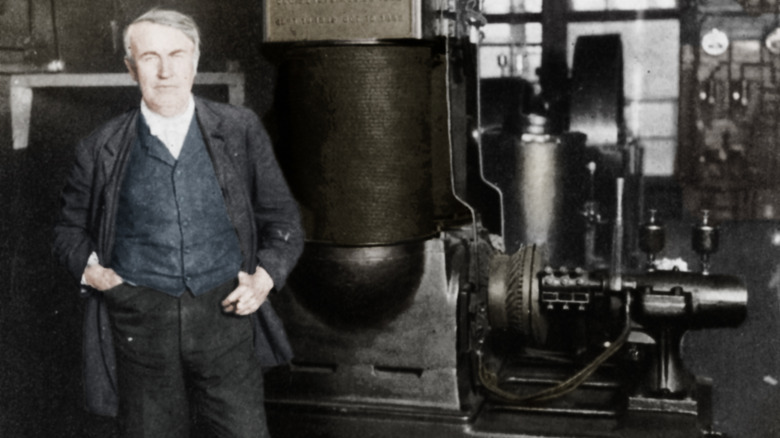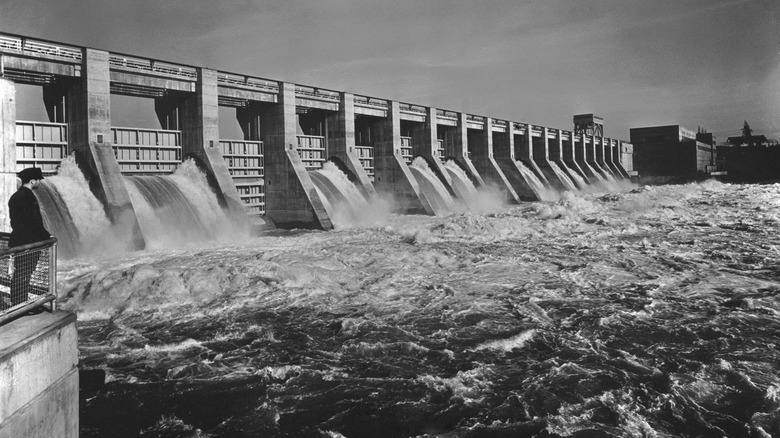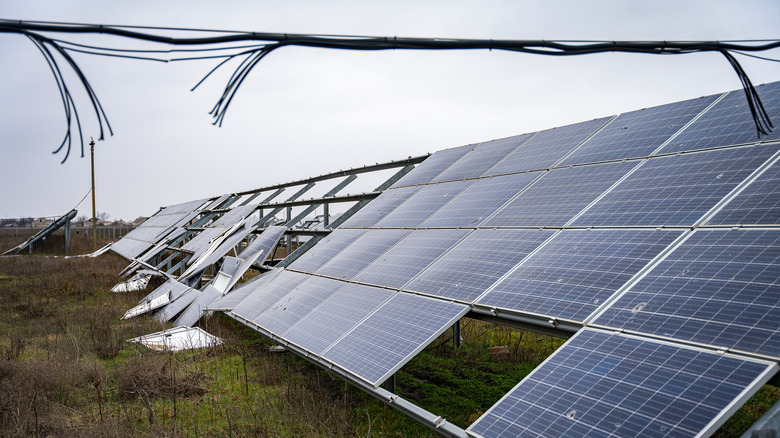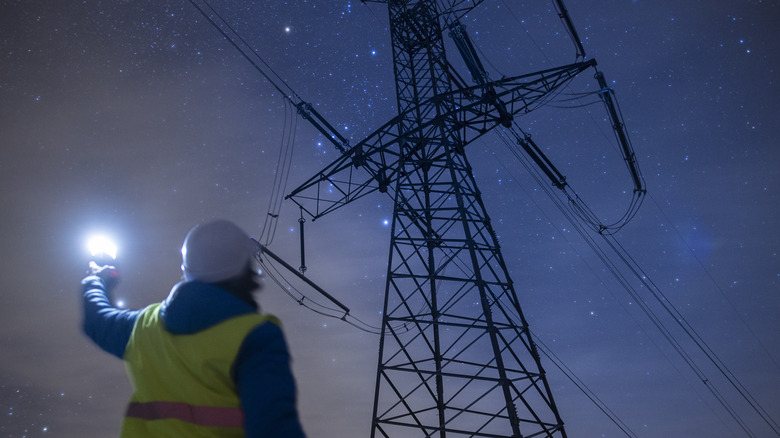Illuminating The History Behind America's Power Grid: A Marvel Of Engineering
The United States power grid is something of a work of art. The technical makeup and massive total infrastructure of this system combine to represent the largest, and potentially the most complex human-constructed machine on the planet. The American system for creating and delivering power traces its roots back more than 150 years to humble beginnings as electric power first was reliably harnessed by humans. The size of the U.S. power grid is difficult to fathom, and in its present state, the grid is actually made up of three separate regional networks.
From the days of primarily coal-fired electricity generation through to the present, when solar power and other renewable energy options are becoming increasingly valued, the energy grid that powers American homes and businesses has continued to be the object of innovation. What's more, the story of how America transitioned from reliance on sunlight hours and candles to the modern bustling and energetic hub of activity that it is today is a fascinating story.
The world's first electrical power network
The American electrical grid is the modern result of a 19th-century breakthrough. After experimenting with lightbulbs and electrical output for a number of years, Thomas Edison's incandescent bulbs were patented in 1880; and in 1882 his Pearl Street Station came online to provide power to them. This was the world's first power station and served 85 customers in a quarter-mile area of Manhattan. Edison's New York operation was the first, but the Vulcan Street Power Plant in Wisconsin came online just weeks later, operated on a hydroelectric system rather than the coal-fired generators underpinning Pearl Street Station.
Not long after these developments, power plants in California and Ohio sprang to life and soon large swaths of the country were served by reliable power generation. However, customers were soon given an improvement to the effective ranges of electric power with the race to the top between direct current (DC) and Nicola Tesla's competing breakthrough, alternating current (AC) power. With an increasing demand on these systems continuing to see new companies enter the fray and existing ones balloon in size it's no wonder the American electricity marketplace became the goliath feature that it is.
Expansion through TVA and other gigantic public works
What's so unique, perhaps, about the U.S. energy sector is its comingled history with environmental stewardship. With that being said, many power projects are detrimental to the environment, and alternatives like solar, wind, nuclear, and even wave capture technology must continue to experience prioritization.
Projects like the Tennessee Valley Authority (TVA) brought power to millions of people in rural America and put people back to work at a time when the nation was under deep economic stress. In 1933, the TVA Act was signed, creating a public corporation that would harness the power of the Tennessee River for the betterment of those who called the area home. In the decades since, the TVA has been an instrumental force in flood control efforts, reforestation, environmental stewardship, and of course, the production of electricity through technologies that harness the natural environment.
Similar public works such as the Hoover Dam (on the Colorado River) were also completed during the Depression era. The dam was dedicated in 1935 and had its hydroelectric generators engaged in 1937. The Hoover Dam controls the river's flooding today and supplies water to 16 million people and 1.5 million acres of land. The generators offer power to more than half a million regional homes as well, making the system a preeminent power source and important environmental public work.
Energy defense is also a critical component of the infrastructure
Massive construction efforts have often been the focus of public-facing reporting on the electricity grid. These headline magnets offer dramatic figures for homes powered—and in the case of renewables: Carbon reduction metrics. But a huge component of the U.S. power grid remains a silent facet of the infrastructure. The defensive capabilities of the grid and those who guard it is a truly staggering responsibility. Natural disasters can knock out power for days or weeks at a time, leaving homes and families vulnerable to the elements and more. Energy defense and recovery efforts focus on restoring power in the event of a system failure, but their primary roles are aimed at something more sinister. Just as the military, Intelligence Community, and other organizations prepare to defend the homeland against the threat of attack, there are public servants out there who spend their days guarding the power grid against similar incursions.
In 2015, a testing team working with authorities was able to successfully gain access to control for north Seattle's electrical systems in just 22 minutes. Power system sabotage has been a highlight of both clandestine and overt battle strategies for as long as electricity has provided material support to populations and their militaries. Ukraine has accused Russia of hacking its power grid in the past, and the 2006 invasion of Lebanon showcased this strategy as Israeli air assets pummeled Lebanese power stations, bridges, and other infrastructure.
The power grid is a magnificent achievement, but will need continued attention
America's power production resources are both impressive and crucial. Hundreds of millions of Americans rely on consistent uptime and functional infrastructure to support their daily lives. Catastrophic failure can occur from time to time and are affecting people in evolving ways. For instance, the Texas freeze in 2021 shuttered the electrical supply to residents for days. This placed homes in darkness, but it also knocked out EV owners' ability to recharge their cars and remain mobile.
It's estimated that around 70% of the power grid's components are at least 25 years old, separating modern electricity utility from the modern world by a generation. As well, even with megaprojects like the Hoover Dam and the more contemporary Swan Lake Energy Storage system in Oregon (a proposed 400 MW renewable power resource that marries hydroelectric and other power generating technologies), many more augmentations and additions will be necessary to meet continually increasing production targets. In addition, electricity management is set to become more complex as solar and wind power from select sites across the country are increasingly called upon to support distant electricity demand. This harkens back to the original competition between producers scrambling to find ways to expand their coverage networks. The history and future of the American electrical frontier and therefore indelibly linked in an almost poetic fashion.




